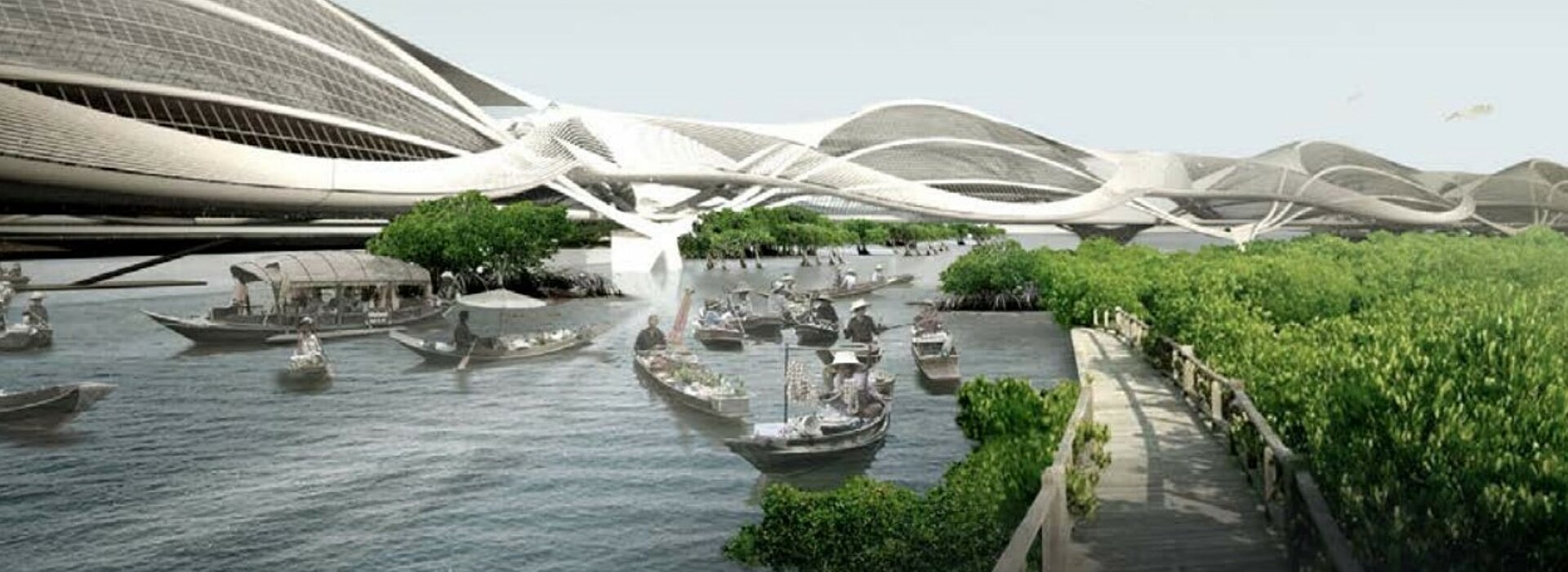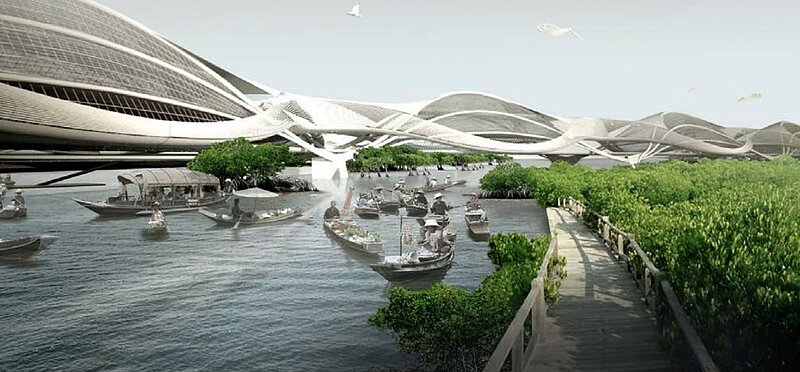Wetropolis
- Year2012
Wetropolis is a city with a deep-ecology sense (Ecocentric, Arne Naess, 1973). In order to grasp the ecological needs and the potetial of the site fo humans, the research is based on the analysis of relationships within the mangrove ecosystem : in regard of the sky, the earth, and the ocean. Architecture has to co-exist together with non-human life by providing an infrastructure that respects the ecosystem and utilizes it. Moreover it aims to restore what has been lost: the mangrove forest together with the food chain for its wildlife and humans. Besides that is has to integrate and to allow the (Thai) traditional water-based vculture to which the adjacent communities belong to. The design proposal reflects a successful community forestry movement in Thailand and perhaps overseas: Humans in respectful co-existence with nature, not only to conserve it, but also to restore its original condition. Instead of resisting the current events and dependence on technology, Wetropolis emphasizes on adaptation to change human behaviour and contemporary life styles in order to sustain/survive the upcoming events. We belief that the emphasis on a strong natural environment will have physical and mental benefits to human life. S+PBA proposes a progressive solution to the rising world population and to minimize the effects of human settlements across the world. Wetropolis, water city, is a city designed to be self-sustained to its most extent and integrates three elements: Architecture, infrastructure and nature. Habitable spaces for various programs are layered over the main circulation network in a et-like form with an alternated rhthm to enable a symbiotic relationship of those elements. The architecture is raised above the water level, where piers are allowed to touch its surface only.


